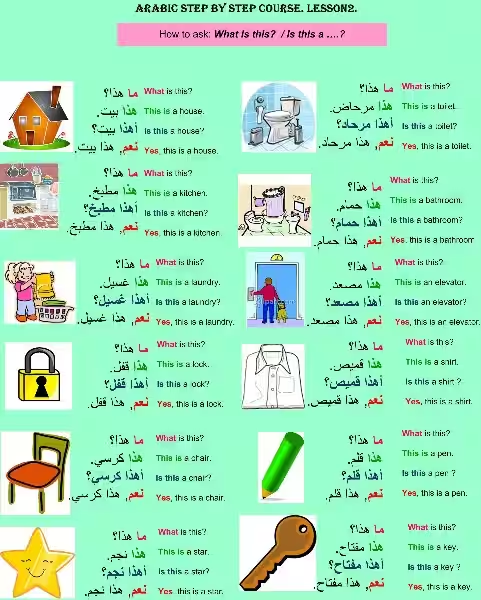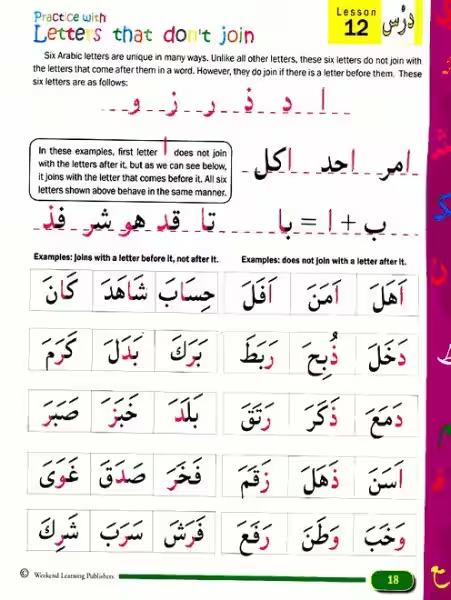
Learning the Arabic language, especially when encountering handwritten Arabic script, presents unique challenges for non-native speakers. This article delves into practical resources for mastering the modern handwritten Arabic script, focusing on identifying and understanding letter connections and common forms without resorting to plagiarism. The goal is not merely to present examples, but to provide a deeper understanding of the decoding process, enabling readers to decipher handwritten scripts rather than simply memorizing static letter configurations.
Understanding Handwritten Arabic Script Variations
Arabic script, particularly in its handwritten form, exhibits inherent variability. Letter connections can differ significantly depending on the writer and the context. This dynamism is crucial to understanding and deciphering handwritten texts. A rigid approach focusing solely on isolated letters will not suffice. Learning the Arabic language, therefore, necessitates a nuanced understanding of how letters interact and connect within words and phrases. This requires familiarity with a range of handwriting styles, recognizing that even within the same dialect or region, variations exist.
Recognizing Connection Patterns in Handwriting
Understanding the connection patterns between letters is paramount. Conjunctions, the omission of certain letter parts, and shape modifications depending on position within a word are key elements. Some letters connect directly, while others may be written independently or linked through ligatures. This often requires observing the overall form of the word, recognizing how letters relate to each other. The pressure applied during writing, the style of writing, and the intention of the writer all contribute to the variability in visual presentation. A critical aspect of learning Arabic is recognizing these subtle variations and understanding their impact on the overall form.
Distinguishing Cursive and Angular Scripts
The difference between cursive and more angular script types is important. Cursive Arabic script, with its interconnected letters, requires different strategies for recognition than more structured fonts. The inherent fluidity of cursive script demands a comprehensive understanding of letter combinations and connections, while angular scripts, though less complex in terms of connections, still present unique characteristics in their visual presentation.
Accessing Varied Arabic Learning Resources
Effective Arabic language learning necessitates a diverse range of resources. It’s not enough to focus on one method; a balanced and multifaceted approach is essential for successful acquisition.
Vocabulary Building and Language Courses
Building a solid vocabulary is critical for effective communication in any language. A reliable Arabic vocabulary tool is a significant asset. Flashcard applications such as Anki, with their spaced repetition algorithms, are highly effective for memorizing vocabulary. Furthermore, structured language courses, like those offered by Qasid Arabic Institute or the Arab Academy, provide a comprehensive educational experience. These institutions often specialize in Modern Standard Arabic (MSA) or Classical Arabic, offering structured learning environments, with some online tutoring options available.
Immersive Learning Through Listening and Reading
Immersion is crucial for effective language acquisition. Listening to native speakers is invaluable. Resources like “Talk in Arabic” and “Arab Voices” offer authentic audio examples, exposing learners to various Arabic dialects. Free resources like NCLRC Arabic Webcasts, combined with accompanying exercises, provide further immersion through newscasts and dialogues. Utilizing audio from the “Arabic Anywhere” course is another valuable method.
Exploring Textbooks and Online Resources
Textbooks provide structured guidance on grammar and vocabulary. “Alif Baa” is a popular choice for mastering the Arabic alphabet. For grammar and vocabulary, “Modern Standard Arabic Grammar,” “Hans Wehr Arabic English Dictionary,” and “Arabic Verbs and Essentials of Grammar” are excellent resources. Additionally, “Kallimni Arabi” addresses specific dialects like Egyptian Arabic.
Online Platforms for Learning and Community Building
Online resources offer a vast array of learning materials. Blogs and forums dedicated to Arabic language learning provide valuable insight from experienced learners. TalkInArabic.com is a useful platform offering resources and perspectives on learning Arabic. Learn_Arabic on Reddit offers a community forum for discussion and support. Benny Lewis’ blog, which frequently addresses language learning, offers specific articles about learning Arabic.
Practical Application and Verification
A crucial aspect of any language learning process is applying the knowledge gained through practice.
Practicing Handwritten Arabic Script Recognition
Practicing recognition of handwritten Arabic script is vital for improving understanding. This involves the systematic examination of varied examples of handwritten script, analyzing letter connections, and identifying overall patterns. Instead of isolated letter displays, focus on words and short phrases that demonstrate the connections. Study examples of different handwriting styles, paying attention to variations in pressure, slant, and letter proportions.
Assessing Comprehension Through Exercises
To assess comprehension, implement exercises that involve the reading of handwritten Arabic texts. Follow the examples with questions that encourage analysis and application of the learned patterns and connections. This interactive approach will reinforce understanding and identify areas needing further attention.
By following this comprehensive approach, incorporating various resources, and emphasizing practical application, learners can effectively navigate the nuances of handwritten Arabic script and gain a deeper understanding of the Arabic language.
Frequently Asked Questions about Arabic Language Learning Resources
What are good resources for learning to read modern Arabic handwriting?
Learning to read modern Arabic handwriting, especially handwritten scripts, requires more than just rote memorization of letter forms. It necessitates understanding how letters connect, the variations in handwriting styles, and the contextual nuances of script. This FAQ section will provide practical resources and guidance. Instead of simply listing letter examples, we focus on how letters connect in words and phrases, showcasing the variability of handwritten Arabic. This includes understanding ligatures, omissions of letter parts, and how letter shapes change based on their position within a word. We’ll also discuss the differences between cursive and angular scripts, and how handwriting varies regionally. Crucially, practice with authentic samples of handwritten text is essential. This FAQ will aid you in identifying patterns and applying your understanding to new handwritten material, rather than just memorizing isolated letters.
What are some recommended resources for learning Arabic vocabulary and grammar?
There’s a wealth of resources available for learning Arabic vocabulary and grammar, ranging from traditional textbooks to online tools and community forums.
-
Vocabulary Building: Digital flashcards, like Anki, can effectively aid in vocabulary acquisition through spaced repetition. Dictionaries like Hans Wehr are invaluable for more detailed lookups.
-
Language Courses: Structured courses from institutions like the Qasid Arabic Institute or the Arab Academy can provide a solid foundation in Modern Standard Arabic (MSA) or Classical Arabic, with some offering online tutoring options. A practical course on Arabic calligraphy will also be extremely helpful.
-
Textbooks: “Alif Baa” is great for initial alphabet acquisition. More comprehensive textbooks like “Modern Standard Arabic Grammar,” “Arabic Verbs and Essentials of Grammar,” and “Kallimni Arabi” cater to different learning stages and needs (including MSA and Egyptian Arabic).
-
Online Resources: Platforms like TalkInArabic.com offer a mixture of learning resources and insights into language learning. Reddit’s “Learn_Arabic” subreddit provides a community for discussion and support. Benny Lewis’s language-learning blog also offers valuable perspectives on Arabic learning (refer to a specific article on learning Arabic).
How can I improve my listening comprehension of Arabic?
Listening comprehension is crucial for learning any language. Immersion in authentic Arabic is key.
- Audio Materials: “Talk in Arabic” provides opportunities to hear a variety of Arabic dialects. “Arab Voices” and audio from the “Arabic Anywhere” course offer further immersion through recorded conversations. Free resources like NCLRC Arabic Webcasts offer newscasts combined with exercises.
What are some effective online learning resources?
A wide range of online materials enhances Arabic learning. Consider:
-
Blogs: Blogs dedicated to learning Arabic (such as those mentioned above) offer valuable insights, practical tips, and a wealth of learning resources. Interactive learning and practical application are essential here.
-
Videos: Video resources, such as tutorials on learning the Arabic alphabet and idiomatic expressions, can be highly beneficial.
What is the importance of practice in learning to read Arabic handwriting?
Constant practice is crucial for developing reading fluency in handwritten Arabic. Observe common letter forms, identify connection patterns, and analyze examples of complete phrases. This process, rather than memorizing isolated letters, builds your skills in interpreting the nuances of handwriting.
How can I verify my understanding of Arabic handwriting?
Regularly practice reading examples of Arabic handwriting and answer comprehension questions or try practical exercises. This turns the information into a dynamic tool for your progress. This can also include activities focused on applying your understanding to new handwritten material.








